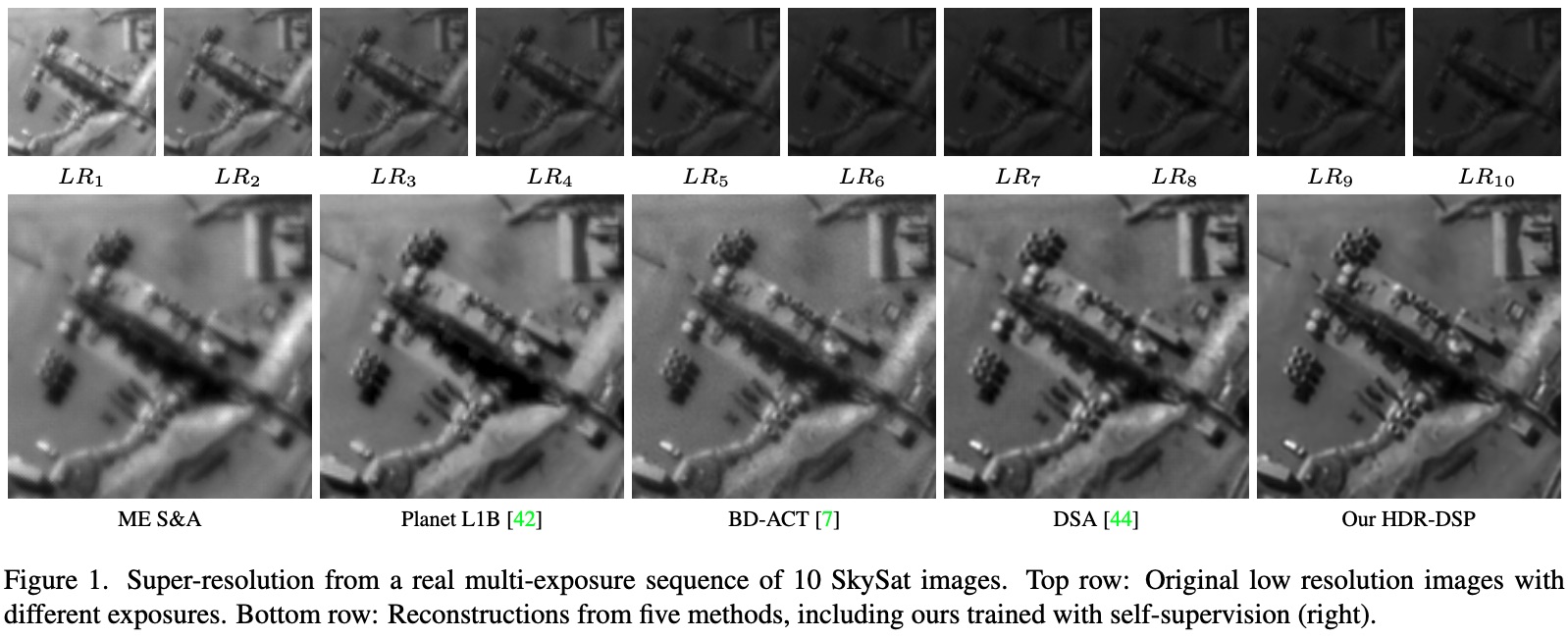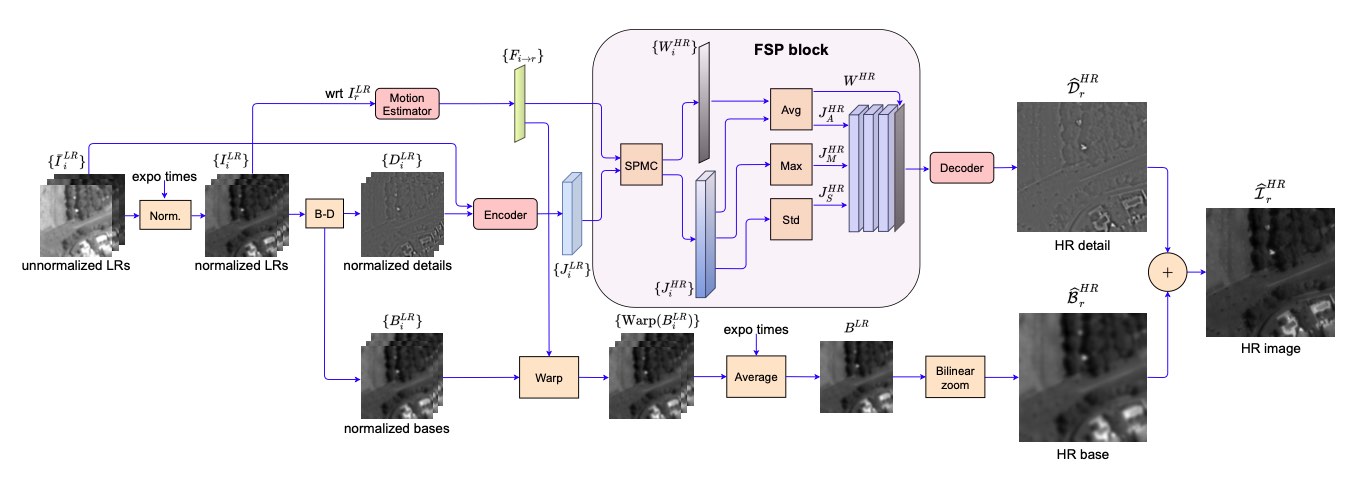
|
|
Project developed at the ENS Paris-Saclay, Centre Borelli and accepted at CVPR 2022. |
|
|
|
|
|
|
|
|
|
|
|

|
|
Project developed at the ENS Paris-Saclay, Centre Borelli and accepted at CVPR 2022. |
| Modern Earth observation satellites capture multi-exposure bursts of push-frame images that can be super-resolved via computational means. In this work, we propose a super-resolution method for such multi-exposure sequences, a problem that has received very little attention in the literature. The proposed method can handle the signal-dependent noise in the inputs, process sequences of any length, and be robust to inaccuracies in the exposure times. Furthermore, it can be trained end-to-end with self-supervision, without requiring ground truth high resolution frames, which makes it especially suited to handle real data. Central to our method are three key contributions: i) a base-detail decomposition for handling errors in the exposure times, ii) a noise-level-aware feature encoding for optimal fusion of frames with varying signal-to-noise ratio and iii) a permutation invariant fusion strategy by temporal pooling operators. We evaluate the proposed method on synthetic and real data and show that it outperforms by a significant margin existing single-exposure approaches that we adapted to the multi-exposure case. |
 |
| HDR-DSP network architecture. Overview of our proposed multi-exposure super-resolution network architecture HDR-DSP at inference time. |
|
The training dataset contains 2660 SkySat L1A sequences (folder Associated to each sequence, there are the saturation masks ( Refer to the paper and its supplementary material for more details. |
 |
N. L. Nguyen, J. Anger, A. Davy, P. Arias, and G. Facciolo Self-Supervised Super-Resolution for Multi-Exposure Push-Frame Satellites. In CVPR 2022. (hosted on ArXiv) |
Acknowledgements |